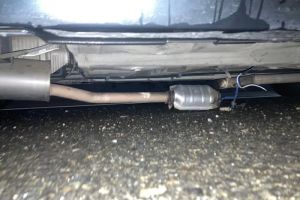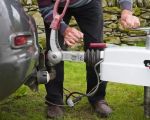- understanding-risks-of-roadside-emergencies-in-rain
- preparing-for-roadside-emergencies-during-rainy-weather
- step-by-step-guidance-for-handling-emergencies-in-rain
- real-world-examples-of-roadside-emergencies-in-rain
- professional-roadside-assistance-in-rainy-conditions
Understanding Risks of Roadside Emergencies in Rain
Handling roadside emergencies in the rain introduces unique challenges that increase risk for drivers and passengers. Reduced visibility, slippery roads, and unpredictable traffic behavior all combine to make even routine roadside repairs more hazardous. Water on the road can mask hazards like potholes or debris, and wet conditions increase the likelihood of accidents near stalled vehicles.
Recognizing these increased risks is the first step toward safely managing emergencies in rainy weather. Drivers must adapt their approach, prioritize safety, and stay alert to changing conditions to avoid secondary incidents.

California Roadside Service
1426 S Allec St, Anaheim, CA 92805, USA
Why Rain Complicates Roadside Emergencies
Wet surfaces reduce tire traction, which makes stopping distances longer and can cause vehicles to skid near emergency stops. Additionally, rain impairs driver judgment and slows reaction times. Electrical components of your vehicle may also be more vulnerable to water damage during repairs, making protective measures essential.

ASAP Roadside Assistance
5400 Yarmouth Ave, Encino, CA 91316, USA
Preparing for Roadside Emergencies During Rainy Weather
Proper preparation can dramatically improve safety and outcomes during rainy roadside emergencies. Having the right gear and mindset prepares drivers to respond effectively.
1. Equip Your Vehicle with Rain-Appropriate Emergency Supplies
Items like waterproof jackets, non-slip gloves, a sturdy umbrella, and high-visibility rain ponchos are invaluable when working outside in the rain. Additionally, ensure your emergency kit includes reflective triangles and a flashlight with waterproof casing to improve visibility.
2. Use Technology to Stay Informed and Connected
Roadside assistance apps and GPS services can provide real-time updates about traffic and weather conditions, helping you find the safest locations to stop and alerting professionals promptly when help is needed.
Step-by-Step Guidance for Handling Emergencies in Rain
Executing safe roadside repairs or managing breakdowns in rain requires careful, methodical action.
Step 1: Find the Safest Possible Spot
Immediately activate your hazard lights and move to the widest, safest shoulder or exit ramp you can find. Avoid stopping on curves, bridges, or narrow shoulders where visibility and space are limited.
Step 2: Make Yourself Visible
Put on a high-visibility raincoat or vest and place reflective warning triangles or flares behind your vehicle to warn other drivers, giving them ample time to slow down or change lanes.
Step 3: Minimize Exposure and Work Efficiently
Rainy conditions increase the risk of hypothermia and accidents. Wear protective clothing and limit the time spent outside your vehicle. Prepare tools and parts in advance to reduce exposure.
Step 4: Avoid Electrical Repairs When Wet
Electrical systems are vulnerable in wet conditions. Unless absolutely necessary and you have expertise, avoid tinkering with wiring or electrical components. Instead, focus on simpler tasks or call for professional help.
Real-World Examples of Roadside Emergencies in Rain
Consider the case of David, who experienced a flat tire on a rainy highway. Because he had a waterproof emergency kit and a reflective rain poncho, he safely changed the tire while visible to other drivers. His quick, prepared response prevented a potentially dangerous situation.
In contrast, another driver, Sarah, stalled in heavy rain without warning devices. Reduced visibility and lack of preparedness resulted in a near-miss accident when a distracted driver failed to see her vehicle in time. Sarah later emphasized the importance of preparation and visibility in rainy roadside emergencies.
Professional Roadside Assistance in Rainy Conditions
Sometimes, the safest and smartest choice is to rely on professional roadside assistance. Rain makes many roadside repairs riskier and more difficult, so trained technicians bring the experience, tools, and safety equipment needed to handle emergencies effectively.
Rescue & Towing offers specialized roadside assistance services tailored for challenging weather conditions, including rain. Their experts provide quick, reliable help while prioritizing your safety and minimizing risks associated with roadside emergencies in adverse weather.
Preparedness, caution, and professional support are the best combination for handling roadside emergencies in the rain, ensuring you and your vehicle remain safe regardless of the weather.






























